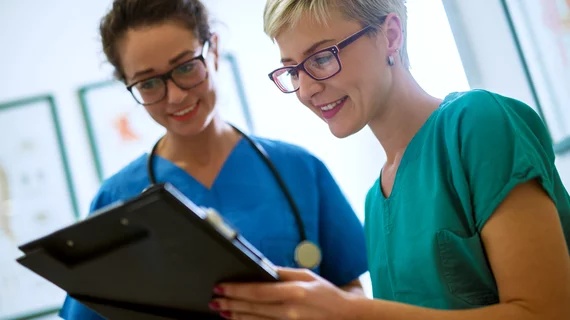AI can identify significant findings on scanned radiology reports, reduce manual workloads
A new deep learning algorithm could help save clinicians time and money by identifying documents that might require follow-ups after they have been scanned into the EHR.
“Scanned documents, while common in electronic health records and potentially rich in clinically relevant information, rarely fit well with clinician workflow,” corresponding author Elmer V. Bernstam, MD, with the School of Biomedical Informatics at the University of Texas Health Science Center at Houston, and co-authors disclosed.
For their research, the doctors identified findings from scanned radiology reports that would require additional follow-up. They focused on three specific findings that are commonly seen in malpractice claims: (1) potentially malignant breast on mammogram, (2) lung lesions seen on CT imaging and (3) long bone fractures on radiographs.
An automated “pipeline” was trained to analyze text using typed and dictated imaging reports that were scanned into an EHR and classified either manually or using ICD-10 codes. The pipeline was then evaluated using a test set of reports that were manually classified.
The researchers reviewed a total of 393 mammograms, 305 chest CT scans and 683 long bone X-ray reports. The algorithm’s accuracy for identifying documents with clinically significant findings was measured using F1 scores, which combine the precision and recall of the model.
Using the manually classified training data, the model achieved F1 scores of 0.900, 0.905, and 0.817 for mammograms, chest CTs and bone x-rays. That’s compared to 0.647, 0.830, and 0.643 when trained using ICD-10 codes.
The pipeline was able to recognize abnormal reports with high recall and useful precision, which could help reduce the manual workload required to categorize scanned documents into an EHR, the experts suggested.
"In future work, we plan on creating better-automated methods for classifying our training data, perhaps using unsupervised machine-learning approaches to create a hybrid unsupervised-supervised pipeline," the authors wrote.
Additionally, they plan to test the pipeline to identify other abnormalities on text documents.
You can view the detailed research in the Journal of the American Medical Informatics Association.

